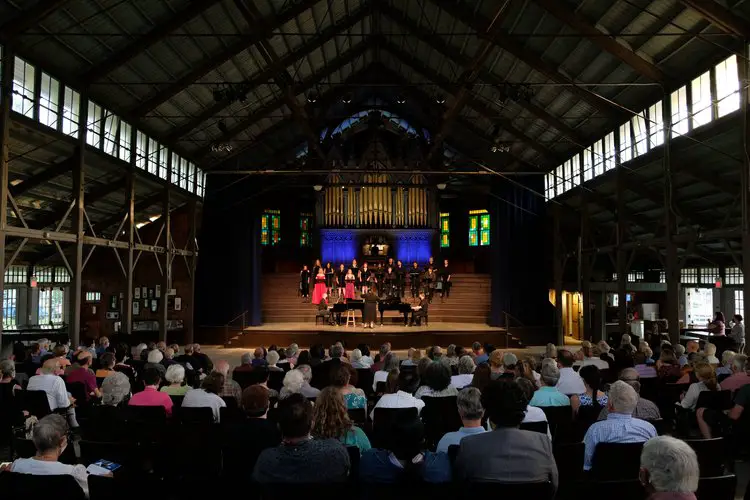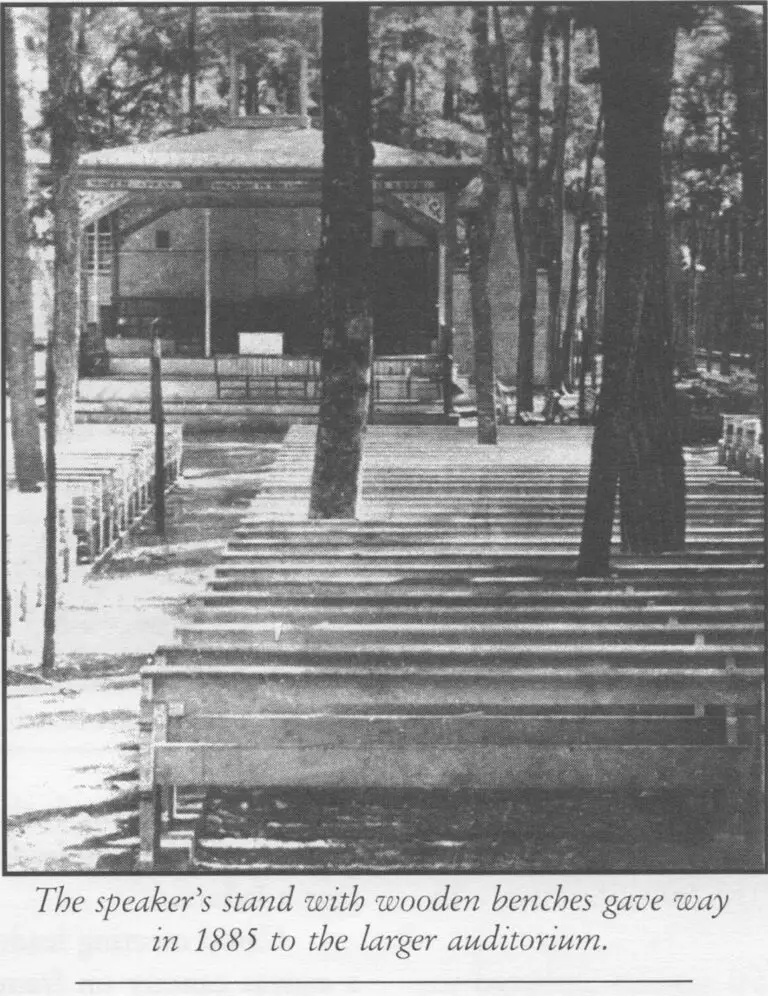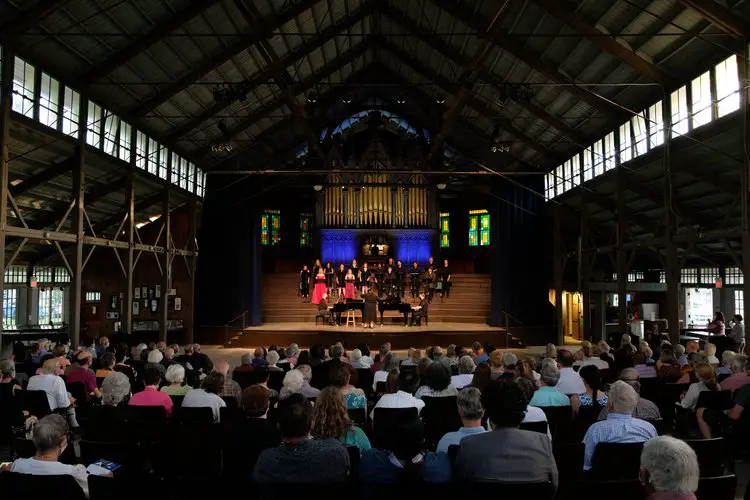

Round Lake Auditorium, located in the historic Round Lake village, has served as a cultural center for over a century. Beginning as a religious settlement, the Round Lake Auditorium has evolved into a unique piece of capital region history. Notable figures, including Ulysses S. Grant and Cornelius Vanderbilt have visited the village of Round Lake, enhancing its deep history.

Founded in the post-Civil War Era, the Auditorium served as a religious gathering place since 1868. A group of Methodists from Troy made Round Lake their designated spot for “campmeeting”. Round Lake began as a covered open air speaker’s platform with the audience sitting on rough boards set on top of tree stumps.
By 1884, an 80 by 140 foot building was erected with furnished seating for 2,000 people. As Round Lake grew in popularity, it expanded its facility to accommodate for a greater audience. The popular religious revivals attracted as many as 20,000 worshippers each summer for rousing sermons.
From the late 1880s to early 1900s, the Auditorium hosted church services, lectures, conventions, concerts, movies, and ice skating in the winter. The Auditorium’s physical space evolved from a platform surrounded by benches to an enormous tent, then to an open-sided pavilion with canvas sides, and, in 1912, to the glass-enclosed building we see today.

Its literal and metaphorical center, the Auditorium is an integral part of Round Lake’s cultural community. The Auditorium fell into ruin and was nearly bulldozed in 1950, but the venue was revived. Today, the auditorium continues to serve as a cultural venue for concerts, performances of all kind, art shows, and community gatherings.
David Ferris Pipe Organ
It is impossible to discuss the Round Lake Auditorium without mentioning the David Ferris Pipe Organ. The David Ferris Pipe Organ, built in New York City in 1847, came to the Round Lake Auditorium in 1888. The organ is the oldest of its kind in the United States, and was designated as a landmark in 2016.

The organ is a feat of American manufacturing and craftsmanship. The organ remains largely unaltered, and it has remained the remarkable instrument it was when it was built over 200 years ago
The organ’s “trackers”, thin wooden pieces that connect the keyboard to the pipes, allowing the organist more control of the sound. The non-wooden pipes in the organ contain Zinc, which adds strength to pipes that otherwise would have been made of lead. Lead pipes, with many of the organ’s contemporaries were constructed with, tended to fold in on themselves and collapse.
Playing the David Ferris Organ is a unique experience some organists compare to, “typing on a manual typewriter versus the light responsiveness of a computer keyboard”.
Present and Future
The Auditorium’s rich history adds to the intimate ambiance of the venue. The Auditorium is capable of accommodating 300 guests, along with orchestras, and stage productions. The Auditorium also holds community events and contributes to local creative arts. An open mic will be held on July 19, offering a perfect opportunity for artists to showcase their gift and build connections with the community.
Round Lake hosts a market event every summer, with food trucks, vendors, and concerts. The free event offers an opportunity to engage with the community while enjoying live music.
Today, the Round Lake Auditorium continues to bring the arts to the capital region. Organ recitals will be presented on August 25 by Craig Williams, September 8 by Tom Dressler, and September 15 by Gail Archer. A lecture series, open mic events, community events, tours, chamber music and master classes will all be part of the summer series. Their full event schedule is available here, and a previous organ performance is available below.
The post Round Lake Auditorium’s Past, Present, and Future appeared first on NYS Music.








